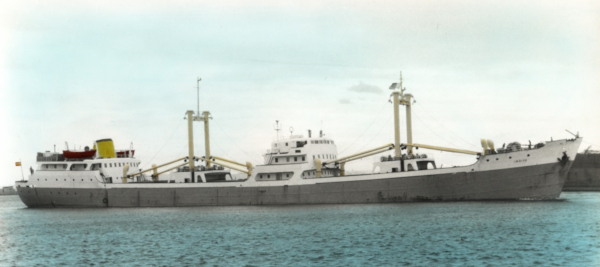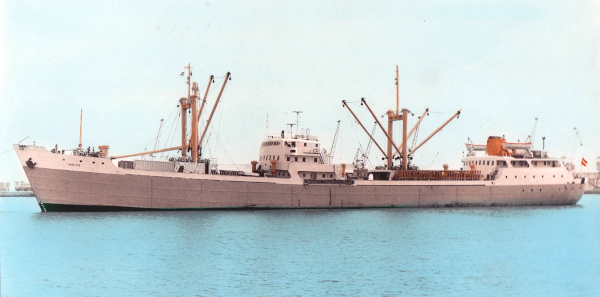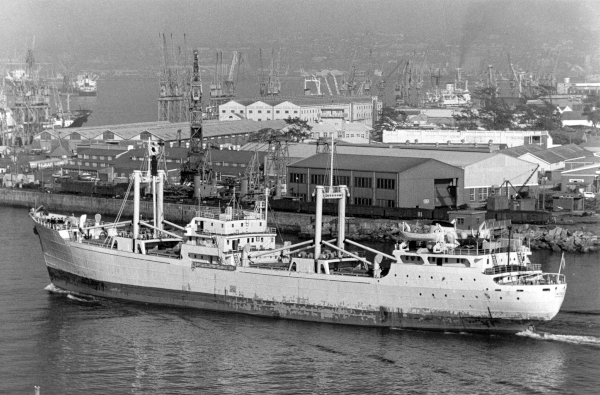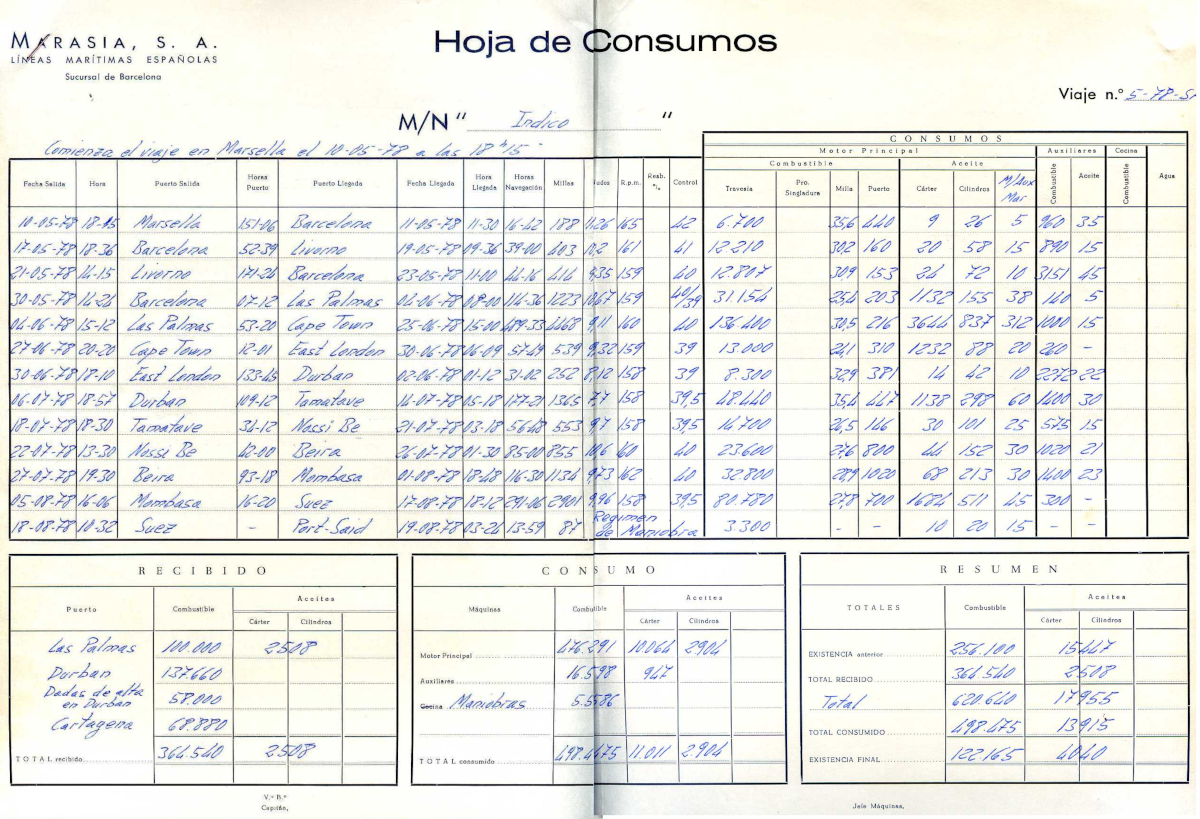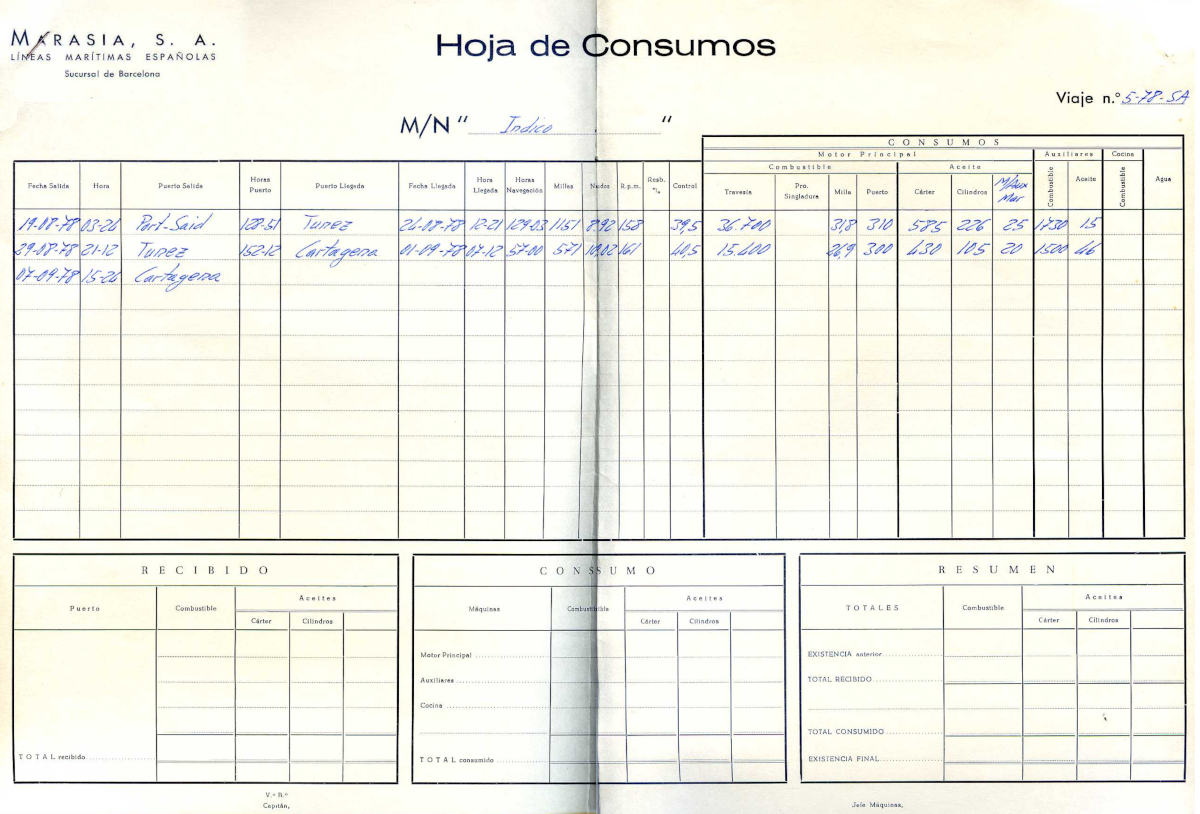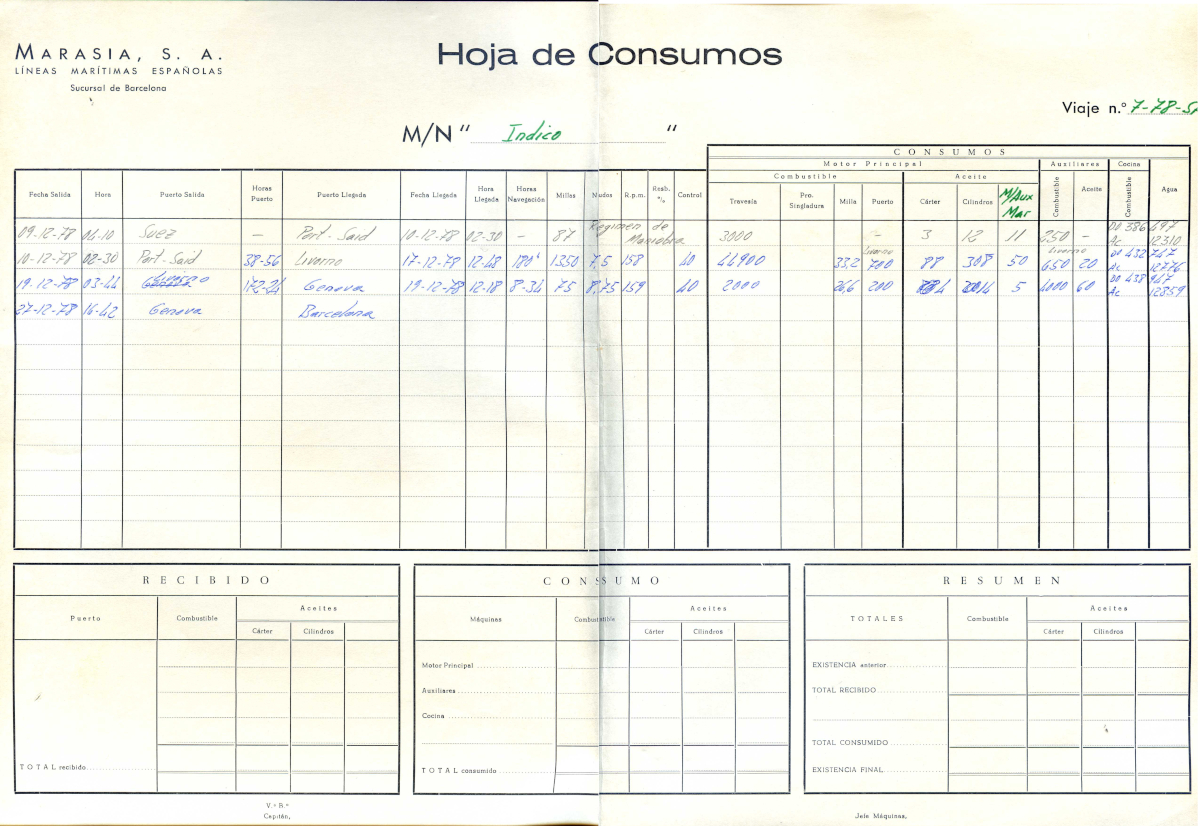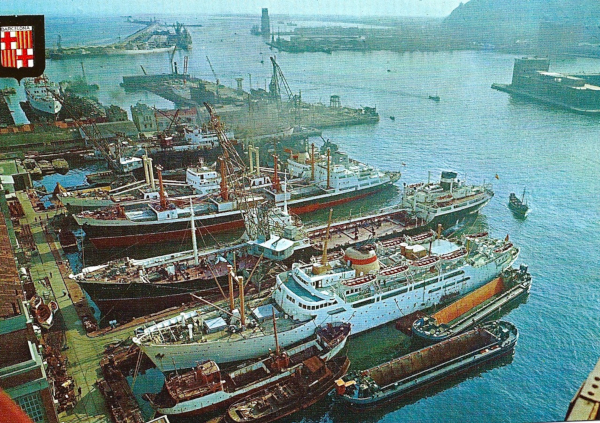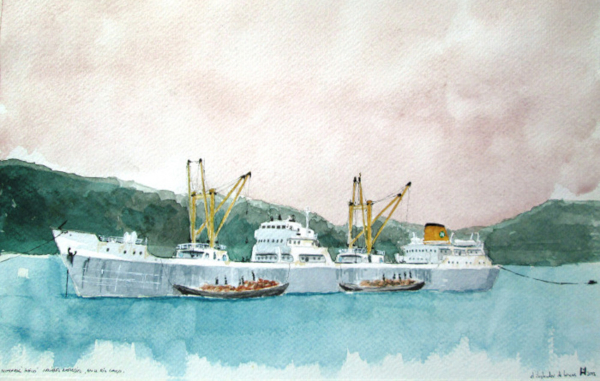

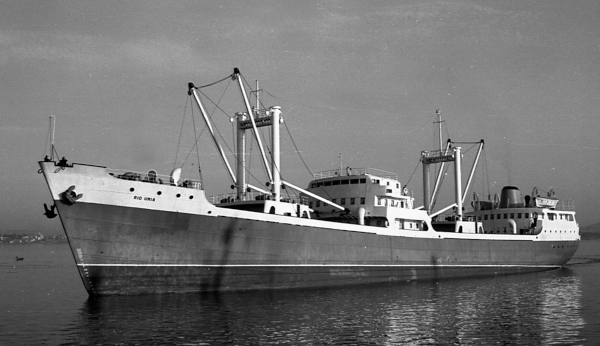
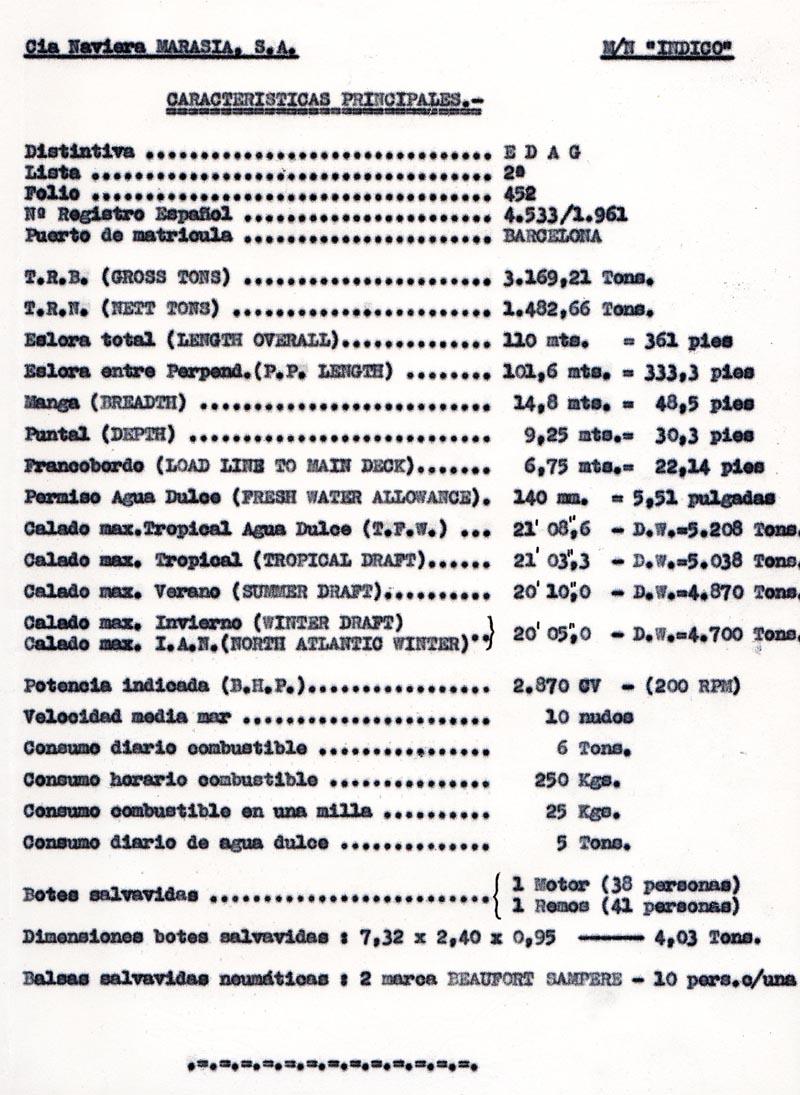
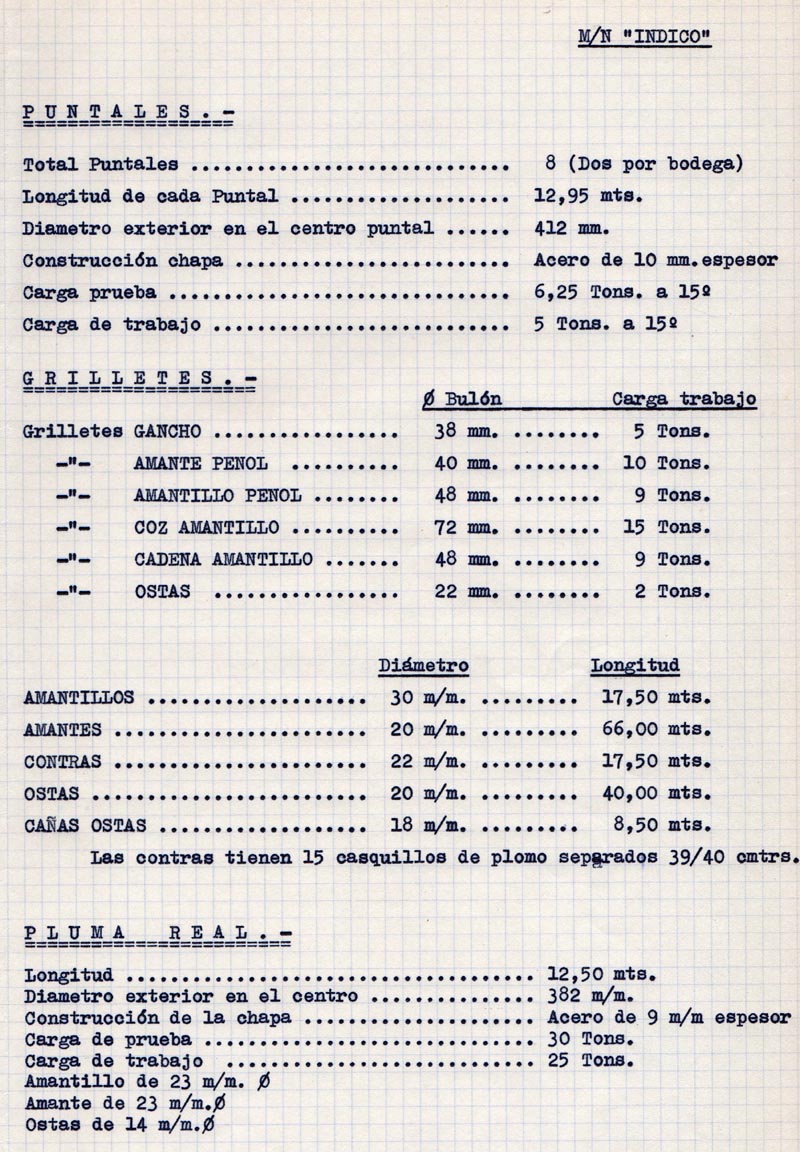
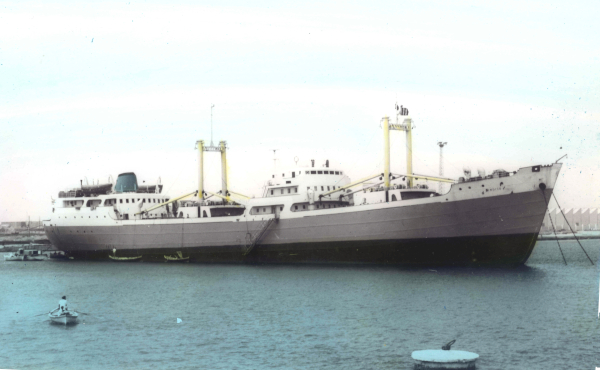
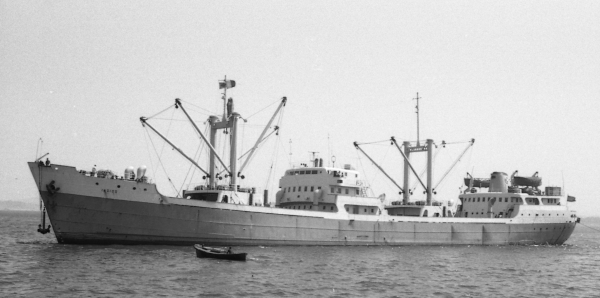
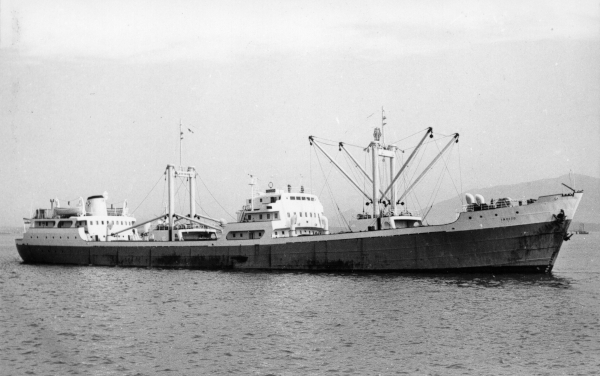
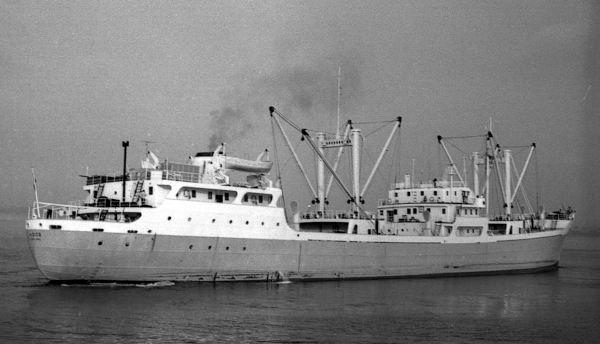
| Her main specifications were: |
| Length: 110.0 mtr - Breadth: 14.8 mtr - Depth: 9.3 mtr - Máximum draft: 6.4 mtr |
| 5,010 DWT - 4,358 MT Load - 7,165 MT Displacement - 3,169 GRT - 1,483 NRT |
| Propulsion: Diesel engine Burmeister & Wain 550-VBF-90 - 2,870 HP - 5 Cylinders x 500 mm bore x 900 mm stroke |
| Propulsion until 1963: 2 MAN M9V40/46 engines - 3,200 H.P. from the German submarine U-167 |
| Consumption: 14 MT/day gasoil - Bunker capacity: 350 MT - Sea trial speed: 14 knots |
| 2 Auxiliary engines MTM (Maquinista Terrestre y Marítima) - 200 kW + 1 Deutz - 220 VDC |
| The original auxiliary engines were ASTANO, but their performance and maintenance were very bad. On 1965 they were changed to MTM. |
